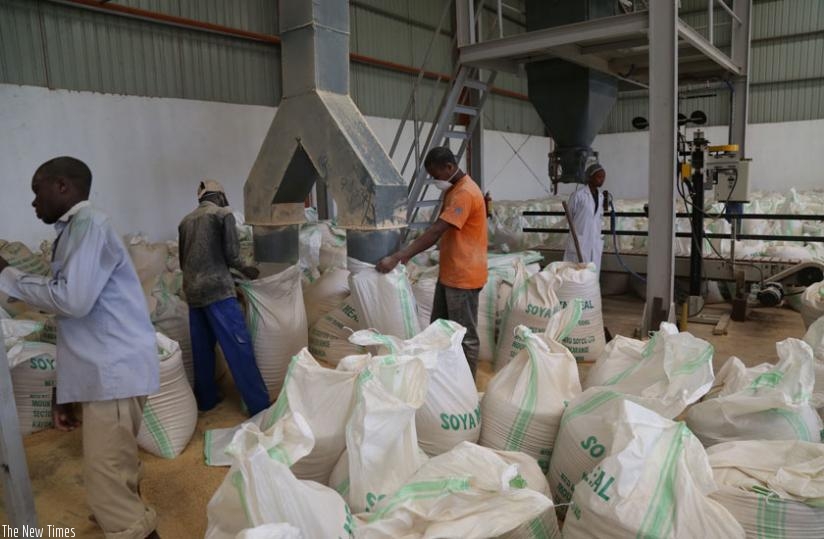Foreign Direct Investment (FDI) to Africa increased by 64 per cent to $87 billion last year, but East African economies were not among the top receivers of the more than 660 projects registered.


Foreign Direct Investment (FDI) to Africa increased by 64 per cent to $87 billion last year, but East African economies were not among the top receivers of the more than 660 projects registered.
In its 2015 Africa Investment Report, the Financial Times indicates that coal, oil and gas, as well as manufacturing, were the most attractive sectors, accounting for 38 and 33 per cent, respectively, of the total announced FDI last year.
In total, 464 foreign companies invested in Africa last year but this number only accounted for 13 per cent of the global FDI capital in 2014 and just 5 per cent of the total projects registered.
Western Europe was the largest source of FDI to Africa last year with 252 projects followed by intra-Africa investments that accounted for at least 131 projects.
Projects from North America were 104 while those from Asia-Pacific were 97; Middle East and the rest of Europe contributed 45 and 27 projects, respectively, and only four from Latin America and the Caribbean.
The US was the single largest source of FDI to Africa with 97 projects but France was the top source of foreign capital investment at $18.3 billion in 2014.
Top FDI destinations
East African economies almost failed to make it to the top ten destinations for FDI in 2014 after Kenya was placed at the bottom of a list topped by Egypt and Angola which claimed 21 and 19 per cent, respectively, of the total capital invested last year.
Uganda, which was among the top 10 destinations in 2013 on account of its nascent oil fields, was edged out of last year’s top 10 after registering a 40 per cent decline which experts attribute to the ongoing turbulence in the oil prices which have discouraged new investments.
According to the report, Kenya also registered a 12 per cent drop in its FDI but received a total of 57 projects, last year and was the leading destination for renewable energy projects.
The East African country has also reportedly registered an annual increase, of 27 per cent, in electricity production from renewable sources for a decade, between 2000 and 2011.
East Africa’s second largest economy, Tanzania, also registered a 20 per cent decline in its FDI and managed to attract only 16 projects last year.
The report didn’t highlight Rwanda’s FDI exploits for last year but, according to Rwanda Development Board chief executive Francis Gatare, out of the $521 million investments registered in 2014, $391 million was foreign capital investment.
Turkish jobs
According to the report, at 16,593, Turkish companies created the largest number of jobs in Africa last year while South Africa topped intra-African job creation at 6,964 jobs.
Both Turkey and South Africa are regarded as emerging markets and according to RDB’s Gatare, the two countries’ contribution to job creation is in line with a new trend that’s likely to persist.
"Look at the Turkish story not as a country but as a trend. Emerging markets are slowly creating more investment opportunities than developed markets and this is something we are likely to continue seeing in years to come,” said Gatare.
Gatare added that the Turkish presence in Rwanda is noticeable and can be felt in sectors such as energy, real estate, construction and manufacturing.
But with most of the emerging economies located in Africa, analysts also predict that more intra-Africa investment will increase in years to come.
For instance, South Africa, which is the second largest economy in Africa, is listed among the top 10 countries that invested within the continent last year, with 45 projects worth $4.6 billion, accounting for 5 per cent of the total FDI into the region for 2014.
The report also shows that at least 10 percent of the capital investment on the continent last year was generated from within Africa itself, a share which is projected to surge in coming years.
Rwanda’s FDI outlook
Yvette Umutoni, the in-charge of investment promotion at RDB, said 2014 saw notable investments in energy, manufacturing and other priority sectors coming into the country.
"Efforts put in investment promotion and marketing yielded 111 new investment projects,” Umutoni said, adding that the magnitude of the projects registered, their value and contribution towards the economy will have a great impact towards job creation and other benefits.
Rwanda registered a total of 111 projects worth $521 million in both local and foreign investments between January and December last year, pushing the number of registered companies to 13,737 from 11,563 registered in 2013.
"A total of 8,348 jobs are expected to be created from the investments registered last year,” Umutoni said.
Energy, ICT, construction and real estate were the three sectors that attracted the largest number of investments accounting for $161.2 million, $93.2 million and $69.9 million, respectively.
"However, investments in the manufacturing, mining and Agriculture sectors are projected to contribute the largest number of jobs,” Umutoni added.
For instance investments in manufacturing are likely to create 3183 jobs, 1613 for mining and 889 from agriculture.
Although the numbers are encouraging, observers note that it’s important to appreciate that registered investments are only a pledge that an investor is willing to invest and has acquired an investment certificate from RDB.
However, the challenge in the past has always been how to fast actualise the pledged investments into realities in order to create the projected jobs and other benefits.
Both the International Monetary Fund and World Bank have slashed Africa’s growth prospects to below 4 percent and with a generally wobbly global economy characterised by low demand and poor commodity prices, countries could have a hard time turning pledges into realities.
editorial@newtimes.co.rw


